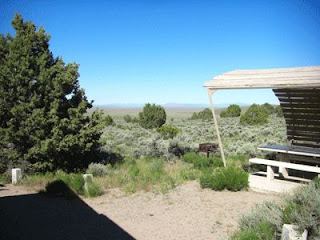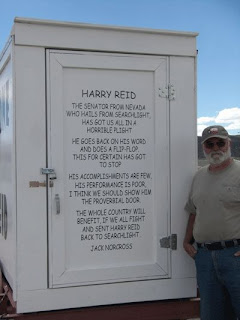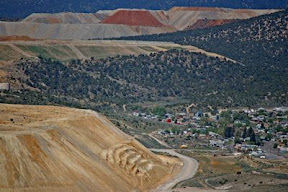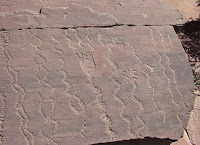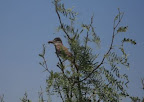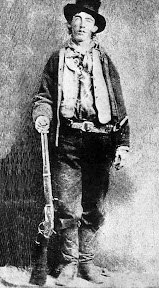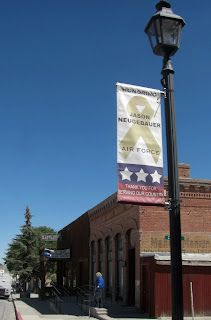 We've been traveling with ghosts these last two days - the ghosts of stage coach drivers, pony express riders, gold and silver miners, pioneers and outlaws, freight and ore wagon drivers, and Native Americans who were here long before any of them.
We've been traveling with ghosts these last two days - the ghosts of stage coach drivers, pony express riders, gold and silver miners, pioneers and outlaws, freight and ore wagon drivers, and Native Americans who were here long before any of them.
Yesterday we stopped briefly in Eureka - named for the outburst so common when a rich vein is struck. . . and in. . Eureka, I've found it! The first thing we noticed is that the town has posted a banner with the name of each of their residents who is serving in the military. A very nice tribute we thought.
Eureka's claim to fame was lead, silver and gold mining. The town is still fairly busy, and the opera house hosts performances on a regular basis.
There were none while we were there unfortunately. The docent at the museum gave us a nice CD with information about each point of interest along the highway. It's a nice addition to the other reference materials and maps we already had. We've listened to the various tracks as we travel and it's been quite entertaining and informative.
We spent the night at Hickison Summit. The area is of geologic interest. The cliffs are formed of volcanic ash, the result of an eruption that caused hundreds of times the amount of ash the St.Helens eruption produced. The ash is compacted, but not really firm rock, so it provided the early Native Americans with an easy medium in which to record petroglyphs. We hiked the short trail to the petroglyphs in the afternoon and took photos, but mostly just enjoyed the view down the valley.
We did have entertainment, provided by Fallon Naval Air Base we assume (Fallon is the Top Gun training site) - a flyover of 2 F-16's - close enough to wave to the pilots if you move fast enough! There were more mosquitoes than we would have expected this time of year, so we only stayed the one night.
Our next stop along the route was Austin. Named for Austin, Texas no less! It's almost the exact center of the state. The town was smaller than we expected based on advertising in the western magazines. They have preserved some of the original buildings, but things could do with a lot of TLC. We visited the cemetary and were impressed not only with the age of some of the graves, but the flowers and other obvious care that is taken to maintain some of the family sites.
West of Austin we stopped briefly at Sand Springs, to see the huge sand dune and the remains of a pony express station. According to our sources this station never had a real roof, but as Molly and I hiked it at 1 PM under a rather sunny sky I have to think they had a canvas roof or something. No one would put up with this heat without at least a little shade.
We're planning to spend the next two nights at Fort Churchill. More updates to follow!
More photos in the slide show below. Click (or double click)on the photo to go to a larger version.

